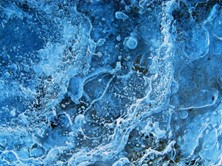Unit 2: Water Data and Analysis
Introduction

Through this unit you whow water data helps us to understand the health of different bodies of water and the impact of human activity on aquatic environments. As part of this process, you will learn how to analyse large sets of data, how digital sensors work and carry out an investigation on the impact of acid rain on aquatic environments.
Activity 2.1
Learn about data literacy by discussing slide 3 of Unit 2 Presentation.
Familiarise yourself with CODAP, a free, education software package for analysing large datasets, by completing the following tutorials:
This CODAP data file contains data collected by the Dublin City University Water Institute, using a multi-sensor wireless instrument. The data was recorded over the course of one month, in Dublin port and contains thousands of values.
Learn about the data collected, the location from which it was collected and the challenges of dealing with such a large dataset by viewing slides 6 – 7 of Unit 2 Presentation.
Open the data file in CODAP and draw appropriate graphs to investigate the following questions:
- How does each parameter change during the course of the month?
- What effect does plotting hourly, daily or weekly averages have on your ability to answer questions?
- Is there a predictable daily variation in each parameter?
- Does any parameter measured vary directly with another parameter?
Share your graphs with the rest of the class via this Google Jamboard. Compare your answers and the different graphs used by each group to answer the same questions.
Discuss the strategies you used to handle large datasets (e.g. temperature data for a full month). See slide 9 of Unit 2 Presentation.
Activity 2.2
Sensors are an important tool in 21st century science. We are going to learn a little more about what the information each of the sensors in Dublin port tell us about the water there.
In groups of 3, examine the list of sensors provided on slide 11 of Unit 2 Presentation. Choose one sensor each and research what it tells us about a body of water and how it records this data. You may use the list of information sources provided here or find your own information online or elsewhere. When the full list of sensors has been researched, share your findings with everyone in the group. Post a summary of your work to this Google Jamboard.
Use the jamboard to compare and contrast your findings to that of other groups. Compare your findings to the information provided on slides 12-13 of Unit 2 Presentation.
Activity 2.3
Often, in data collected in the natural environment, there are patterns present in the data. These may be caused by natural cycles (e.g. changes in tides, sunlight, rainfall etc.) or the influence of human activities.
Analyse the Dublin port data to identify any evidence of cyclical events for each parameter. Post your findings to Google jamboard.
Consider two cyclic events –
- high tide which occurs at approximately 12.00 noon and 23.00 midnight and low tide which happens at 04.00 and 20.00.
- ferry times where three ferries arrive/leave Dublin port each day
- Ferry 1 arrives between 04.00 and 07.00 and departs between 08.00 and 11.00
- Ferry 2 arrives between 10.00 and 14.00 and departs between 14.00 and 17.00
- Ferry 3 arrives between 16.00 and 19.00 and departs between 19.00 and 21.00
Using your data investigate if there is any effect on the parameters recorded on Dublin bay by changes to the tide and ferry activity.
Post your answers on Google jamboard.
Discuss the findings of each group, including the different approaches used to answer the same questions.
Activity 2.4
While our multi-sensor instrument in Dublin port didn’t measure it, pH (potential of hydrogen) is an important measure of the chemical reactivity of water. Learn about pH and the difference between naturally-occurring rain and acid rain using slides 16 – 19 of Unit 2 Presentation and by watching these three videos:
Video 1 – Dissociation of water
Video 3 – How a pH probe works
What happens to the molecular make-up of water as pH increases/decreases?
The pH scale is a logarithmic scale. What does this mean? If the reading of a solution decreases by 1 unit, what has happened to the concentration of hydrogen ions in the solution? Explain.
Activity 2.5
You are now going to carry out two experiments, introduced on slides 20-27 of Unit 2 Presentation, which will help you to better understand the impact of acidity on water’s ability to support life. You will do so via two activities:
- exploring how carbon dioxide gas causes rainwater to be naturally acidic
- exploring the impact of acid rain on different types of water
Complete this digital worksheet, making sure to follow all safety precautions. Discuss the results of your experiments with the rest of the class.
What process causes rainfall to be slightly acidic? Why doesn’t this process cause the pH of rainwater to drop by too much?
What process causes acid rain? Does acid rain have the same effect on different bodies of water? Why/why not? When we say seawater is naturally buffering, what do we mean? Read this article and watch this video to find out more about naturally-occurring buffers.
Activity 2.6
Reflect on your learning throughout Unit 1, by downloading and completing this learning log. Share your reflections with your tutor.
